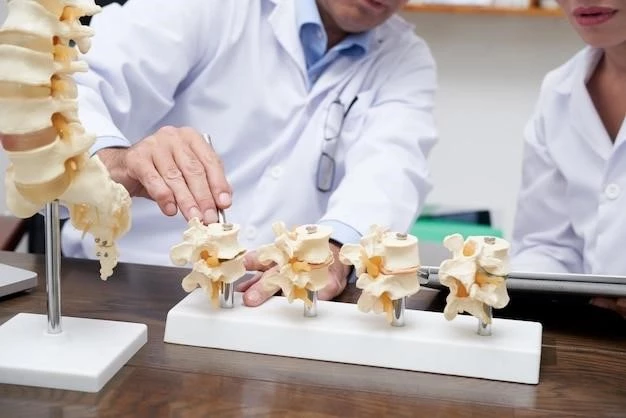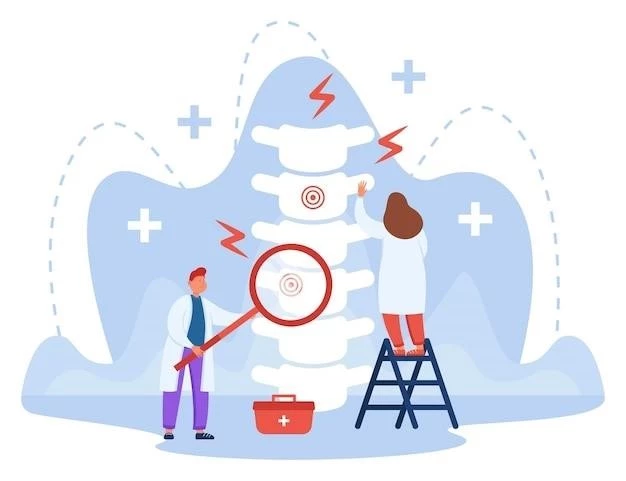Introduction to Scoliosis
Scoliosis is a sideways curvature of the spine, forming an S or C shape. Some cases are mild and may not require treatment, while severe cases may need surgery.
Scoliosis is a common condition characterized by a sideways curvature of the spine, often forming an S or C shape. This abnormal curvature can impact posture and lead to visible asymmetry in the shoulders or torso. While many cases are mild and may not require intervention, severe scoliosis can cause significant discomfort and may necessitate surgical treatment to correct the spinal alignment.
Types of Scoliosis
Scoliosis can be classified into different types based on their causes. Idiopathic scoliosis is the most common type, where the exact cause is unknown, while neuromuscular scoliosis is linked to nerve or muscle conditions. Degenerative scoliosis typically affects older adults due to wear and tear on the spine with age. Understanding the type of scoliosis is crucial for determining the most effective treatment approach.
Definition and Description
Scoliosis involves the sideways curvature of the spine, creating an S or C shape. The condition can vary in severity, with some cases requiring no treatment and others necessitating surgical correction.
Idiopathic Scoliosis
Idiopathic scoliosis is the most common type, where the cause is unknown. It often presents in children and adolescents, and early detection is essential for effective management. Regular check-ups and monitoring can help track the progression of the spinal curvature in cases of idiopathic scoliosis.
Neuromuscular and Degenerative Causes
Neuromuscular scoliosis is often associated with conditions affecting nerves or muscles, such as cerebral palsy or muscular dystrophy. On the other hand, degenerative scoliosis typically develops in older adults due to spinal wear and tear. Understanding the underlying causes of scoliosis is crucial for tailored treatment strategies.
Symptoms and Diagnosis
Recognizing scoliosis early is crucial. Look for signs like uneven shoulders, leaning to one side, or protruding shoulder blades. A diagnosis involves physical exams and X-rays to measure the spinal curvature.
Signs of Scoliosis
Signs of scoliosis include uneven shoulders, leaning to one side, or having one shoulder blade protrude more than the other. Early detection through observing these signs and seeking medical evaluation is crucial for effective management of the condition.
Diagnostic Procedures
Diagnosing scoliosis involves physical examinations where the curvature of the spine is assessed. X-rays are commonly used to confirm the presence and extent of the curvature. These diagnostic procedures help determine the severity of the condition and guide appropriate treatment decisions.

Treatment Options
Effective treatment for scoliosis depends on the severity of the spinal curvature. Options include monitoring, bracing to prevent worsening, physical therapy to improve strength and flexibility, and surgical interventions for severe cases.
Observation and Monitoring
For mild cases of scoliosis, observation and regular monitoring by a healthcare provider are crucial. This approach helps track any progression of the spinal curvature over time and enables timely intervention if necessary. Monitoring ensures that the condition is appropriately managed and any potential worsening is addressed proactively.
Bracing and Physical Therapy
Bracing and physical therapy are common treatment approaches for scoliosis. Bracing helps prevent further curvature progression, especially in children and adolescents with moderate scoliosis. Physical therapy focuses on strengthening core muscles and improving flexibility to support the spine’s alignment.
Surgical Interventions
When scoliosis reaches severe levels, typically over a 45-degree curvature, surgery may be necessary to correct the spinal deformity. Spinal fusion aims to align the spine and prevent further curvature progression. Surgical interventions are carefully considered based on the individual’s condition, age, and overall health.

Living with Scoliosis
Living with scoliosis can vary depending on the severity. While mild cases may not require treatment, regular check-ups ensure proper management. Maintaining proper posture and engaging in exercises can help manage symptoms.
Daily Life and Activities
Living with scoliosis involves maintaining an active lifestyle while being mindful of posture and spinal health. Regular exercise, including activities that strengthen the core muscles, can help support the spine. Additionally, practicing good posture and using ergonomic accessories can contribute to better spinal alignment and overall well-being.
Management Strategies
Managing scoliosis involves a combination of approaches tailored to each individual. Maintaining a healthy lifestyle, including regular exercise focused on strengthening the core muscles, can help support the spine and improve posture. Additionally, follow-up appointments with healthcare providers are important to monitor the progression of the condition and adjust treatment strategies as needed.
Prognosis and Complications
Living with scoliosis requires monitoring and appropriate treatment to manage symptoms and prevent complications. Understanding the long-term outlook and potential complications associated with scoliosis is crucial for maintaining spinal health and overall well-being.
Long-Term Outlook
When it comes to scoliosis, the long-term outlook varies depending on the severity of the condition and the chosen treatment path. While mild cases might not significantly impact daily life, severe scoliosis may lead to complications affecting lung and heart function. Regular monitoring and appropriate treatment can help manage scoliosis effectively and improve long-term outcomes.
Potential Complications
Complications of scoliosis can arise, especially in severe cases with significant spinal curvature. These complications may include impaired lung function, restricted mobility, and potential issues with internal organs due to the curvature’s impact on the body’s alignment. It is essential to address scoliosis early to prevent complications and ensure optimal long-term health.
